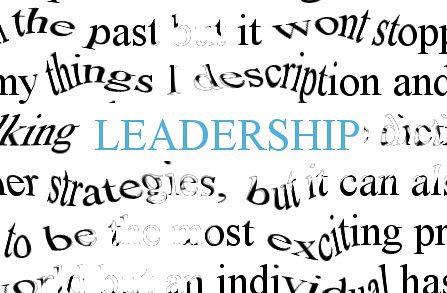 Reading Time: 3 minutes read
Reading Time: 3 minutes readNapoleon once said: “One bad general does better than two good ones.” It takes a moment for the sense of this to register, but it is the same as our modern saying that “too many cooks spoil the broth”. Having one set of instructions, even if they are flawed, is preferable to having two sets of perfect directions that, when enacted together without reference to each other, cause havoc.
This is the principle of leadership in a nutshell. It is all about maintaining focus and creating positive outcomes.

The same can be applied to individuals who strive to become leaders. There needs to be focus and determination. Advice can be given, but does not have to be heeded. History is full of leaders whose beginnings were disastrous, and had they listened to the naysayers of this world, the world would be a poorer place today.
To lead, you have to touch, move and inspire
Leadership can be learned. Some people are certainly born with leadership skills, but this is not a prerequisite for becoming a leader. More important is dedication to the art of leadership. Leadership involves understanding how to inspire, influence and control how people behave. It is not a simple matter of shouting, or having a deep and booming voice; or being great in physical stature; Gandhi possessed none of these attributes, but managed to lead a nation and inspire millions around the world.
Sometimes, leadership may be no more than having a poignant message for a receptive audience at an opportune moment. Of itself, leadership is neither good nor bad; the world has known more than its fair share of evil and charismatic dictators.
In the world of business, the perception of leadership has changed from its early days when it largely mirrored the military model of leadership from the top down, with powerful individuals dominating large groups of less powerful people.
Leadership is knowledge driven
Nowadays, leadership in business is far more knowledge-driven. The lowliest employee may end up effectively leading the direction of a vast corporation through his or her innovative ideas. Anyone with critical knowledge can show leadership. This is known as thought-leadership. In other situations, leadership can be about taking a stand for what you believe in, and trying to convince people to think and act differently.
Leadership has been variously described as the “process of social influence in which one person can enlist the aid and support of others in the accomplishment of a common task”; “creating a way for people to contribute to making something extraordinary happen”; “the ability to successfully integrate and maximize available resources within the internal and external environment for the attainment of organizational or societal goals”; and “the capacity of leaders to listen and observe, to use their expertise as a starting point to encourage dialogue between all levels of decision-making, to establish processes and transparency in decision-making, to articulate their own values and visions clearly but not impose them. Leadership is about setting and not just reacting to agendas, identifying problems, and initiating change that makes for substantive improvement rather than managing change”.
It’s a lot easier to lead with good data
Great leaders have two characteristics that makes them “followable” and influential; a purpose and good data. These days, it charisma will only take you so far. Your prospects, customers and audience isn’t stupid — they have access to nearly perfect information. That means that to lead, you will need good data, delivered in a way that makes sense and helps your people move forward.
As you’re thinking about where to take your organization, this is the perfect place to start collecting some data; either from your customers, prospects or general audience.
Meet them where they are
You’re probably really excited about what you’re up to, but your goal as a leader is to enroll others. The best way to do that is to find out where they are and meet them there.
Consider doing some in-depth-interviews or open conversations that center on what really matters to them. Then convert those conversations into a discussion guide that you program into your QuestionPro application. Then start making calls and documenting those conversations inside your QuestionPro — this way you’ll actually have transcribed voice of the customer information that you can reference and use in your messaging.
Once you’ve gathered enough information, you can convert that open-ended QuestionPro discussion guide into a more quantitative multiple choice short survey that you can share with additional people and this will keep you on track; focused and connected to your audience.
When the experts say that leadership is a learned skill — it isn’t just about leadership and communication skills, it’s about connecting with people in an intelligent and informed way. Use this easy QuestionPro discussion guide as a process to keep you focused on what really matters to your marketplace.




















